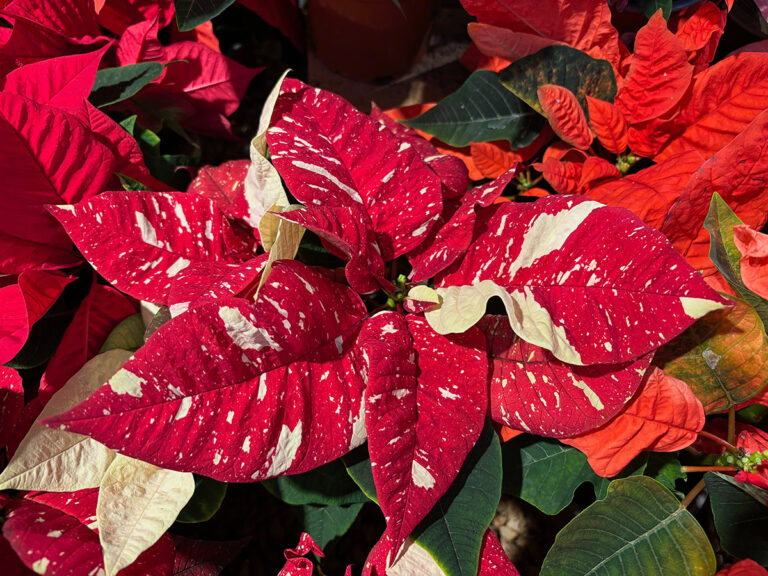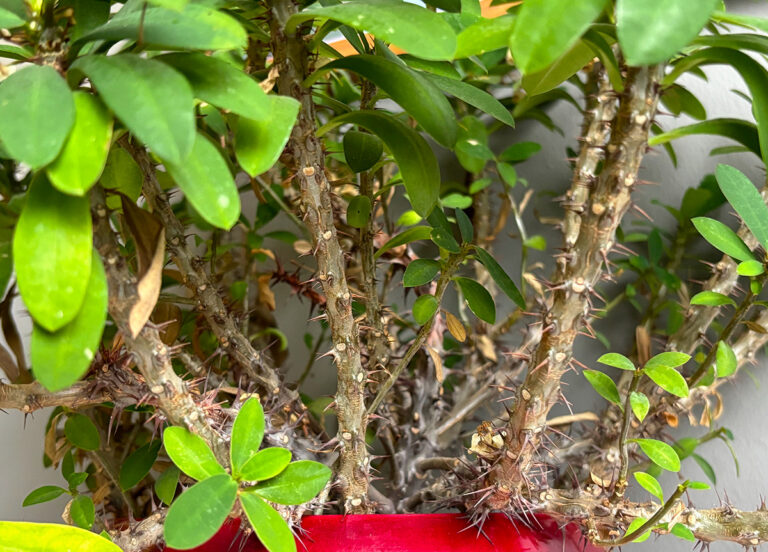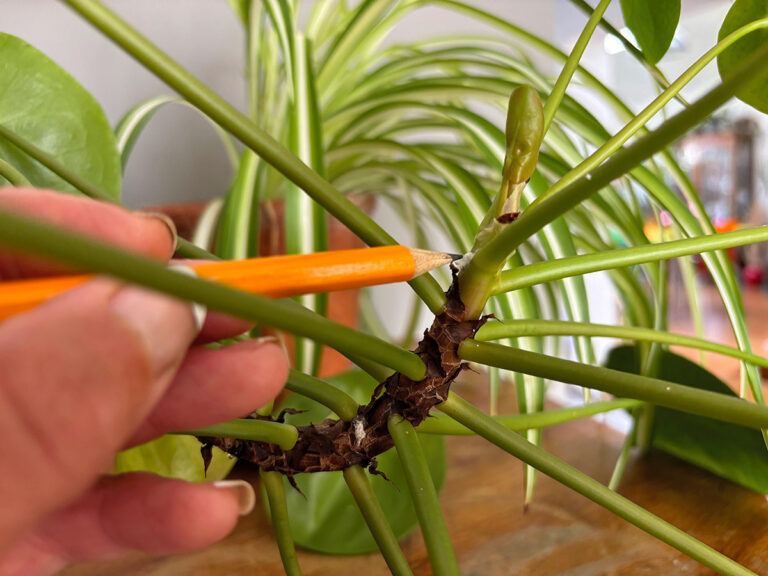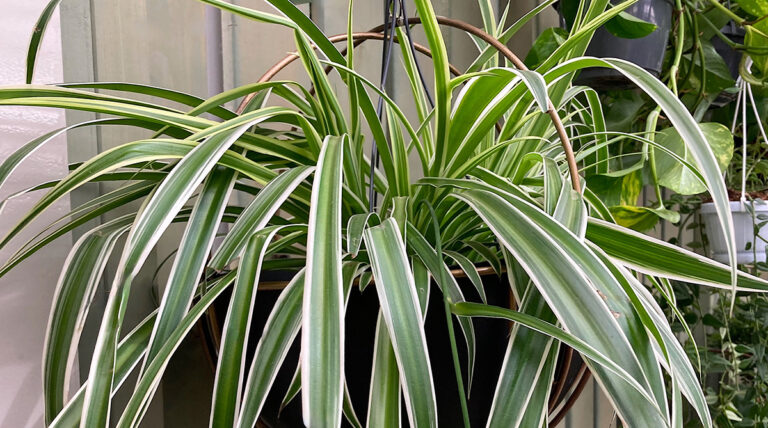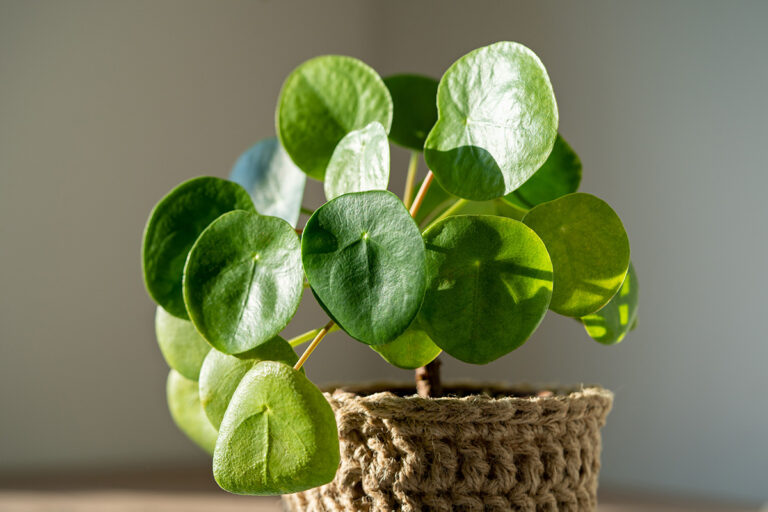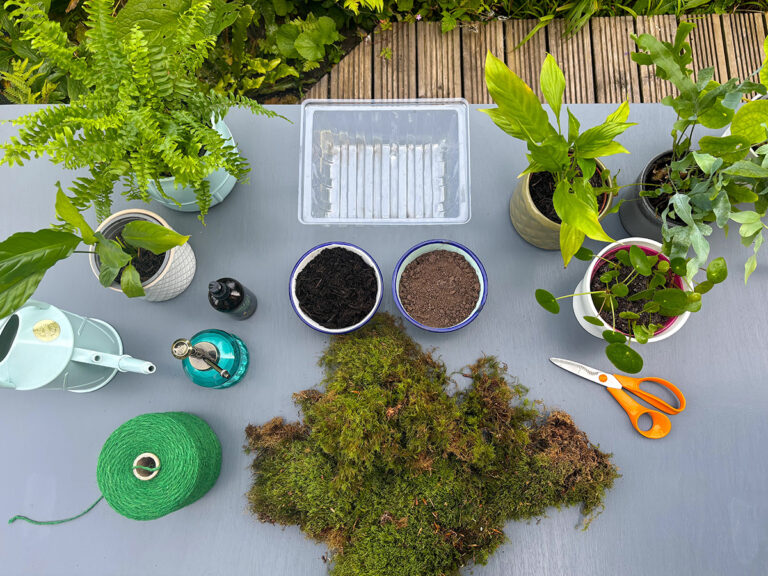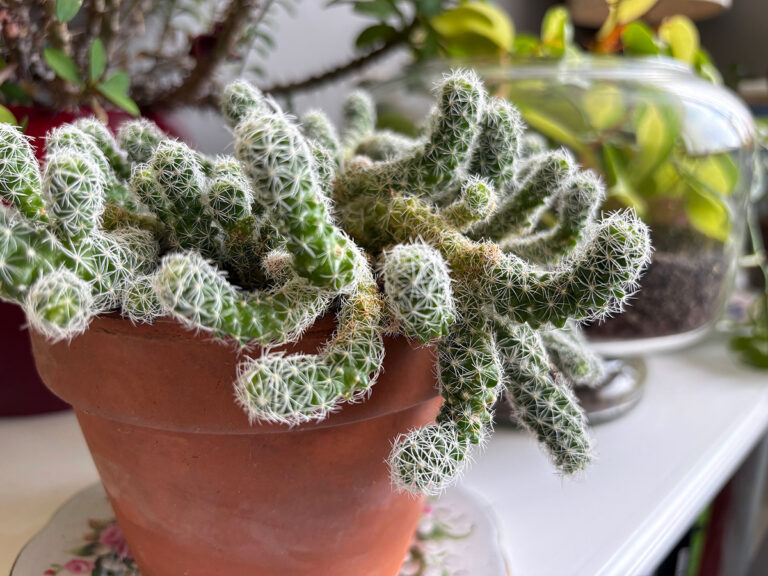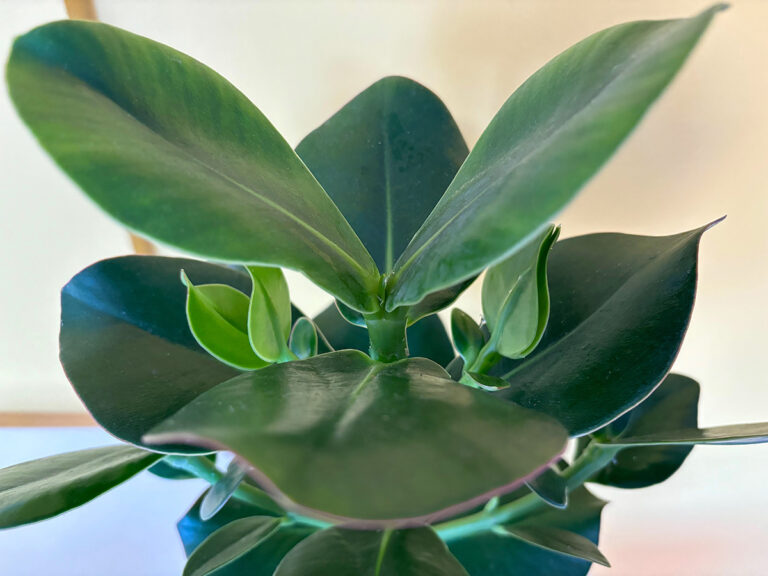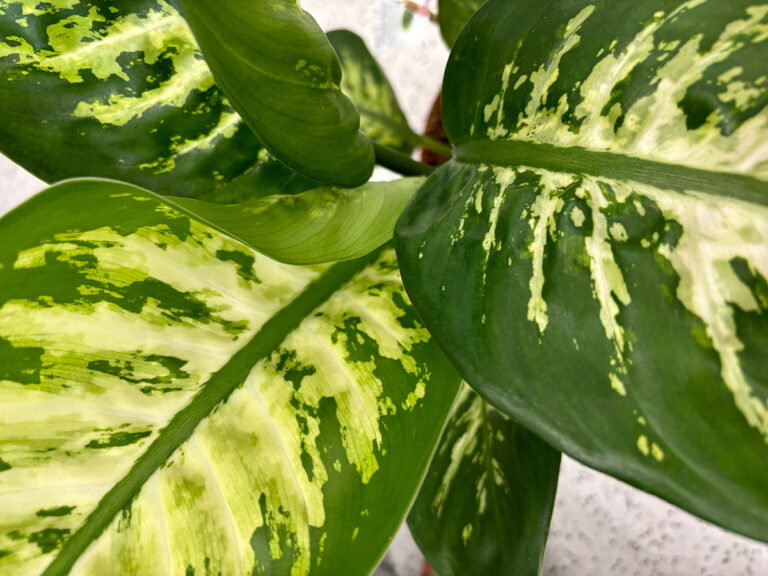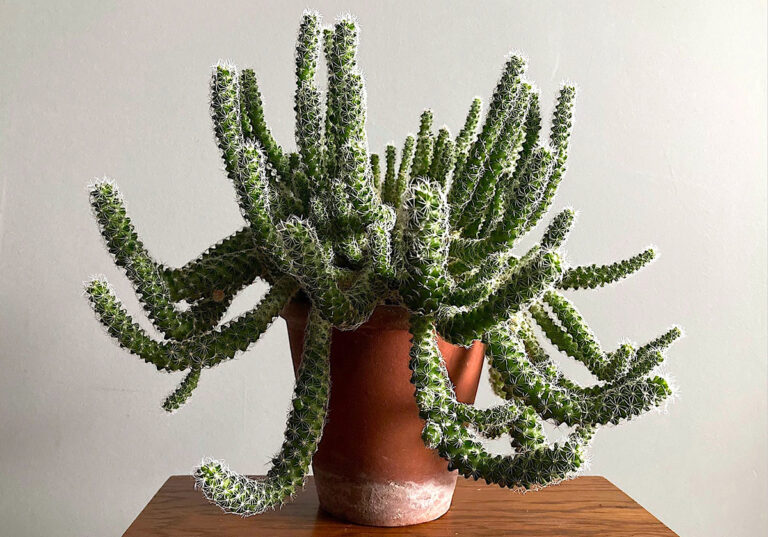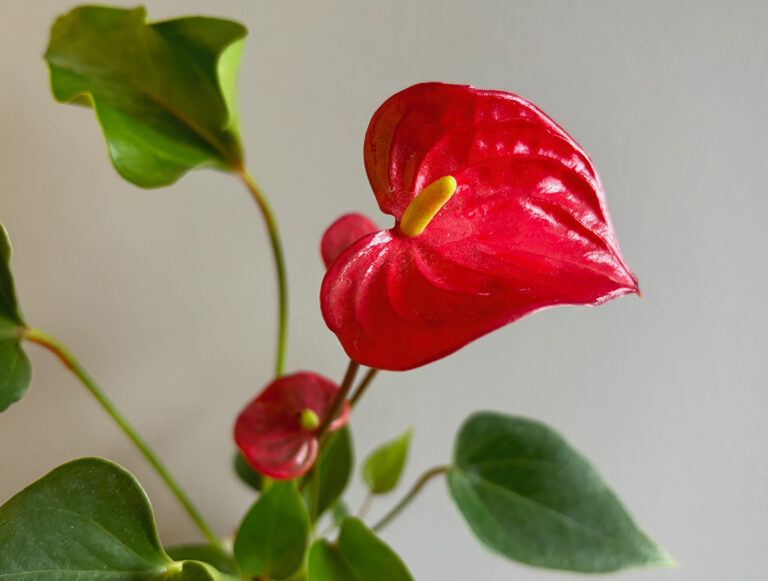“Why is my houseplant dying?”
Many houseplants live a long life, brightening up your home without ever giving cause for concern. However, it can be very worrying when a cherished plant starts to go down hill rapidly and there is no obvious reason for its decline. Fortunately, most plants will make a full recovery once you figure out the problem.
A quick word of warning. The sight of a houseplant in distress is often met by reaching for the watering can. While dryness at the roots is sometimes the cause of problems, it isn’t always, and giving plants a good drink can sometimes do more harm than good, depending on what is wrong.
“Why are the leaves of my houseplant dropping off?”
Cause
One of the main reasons for houseplants unexpectedly dropping leaves is shock. This could be due to it being moved from a warm position to a cooler position; from a shadier spot to somewhere much lighter; or from a sheltered place to a draughty location. Sometimes plants that have spent most of their lives indoors, rebel when they are placed outside for a summer airing.
Solution
Although worrying and unsightly, leaf loss is usually a temporary and most plants will make a full recovery once they get used to the change of location.
Prevention
Try to avoid unnecessary movement of plants from one place to another. Some plants are more prone to sudden leaf loss than others. This includes weeping fig, croton and fiddle leaf fig.
“Why are the leaves and stems of my plant wilting?”
Cause
There are several reasons why a houseplant might start to flag, including overwatering and exposure to too much heat. However, the most likely cause is that the roots are dry due to lack of moisture. It’s easy to test by poking your finger into the compost, up to your first knuckle, to check whether it’s dry.
Solution
If the compost is completely dry, it will need to be thoroughly wetted. Water will sometimes run through completely dry compost if you apply from above, so stand the container in a bowl of water and allow it to be taken up from below. When the surface is visibly damp, remove from the bowl and stand on a saucer to drain.
Prevention
Water plants regularly during the growing season, and less so in winter. If the plant is pot-bound, move it into a slightly bigger pot.
“Why isn’t my houseplant growing?”
Cause
If you are watering and feeding the plant regularly during the growing season, and it’s growing slowly or not at all, then the chances are that it is pot-bound, with a mass of roots that have taken up most of the available space in the container. Another sign of a houseplant being pot-bound is that compost dries out quickly
Solution
Move the plant into a slightly larger container. When you slide the root ball out of its original pot, tease out some of the congested roots to enable them to penetrate the surrounding compost in their new pot.
Prevention
Keep a close eye on plants and re-pot them if roots are growing out of the drainage holes in the base or if more frequent watering is required. Many plants are happy to be re-potted in spring on an annual basis, while fast-growing houseplants might need potting several times during the growing season.
“Why are the leaves of my houseplant turning yellow?”
Cause
There’s nothing to worry about if the occasional leaf at the bottom of the plant turns yellow and falls off – it’s just part of the ageing and growing process. However, if several leaves turn yellow all at once then it’s likely that the plant has been overwatered. Check by pushing your finger into the compost.
Solution
If the plant is sitting in a saucer or decorative pot cover, make sure there is no excess water in the base. Allow the compost to dry out thoroughly before giving the plant another drink. Unfortunately, some plants never recover from being overwatered as the roots will have started to rot.
Prevention
Different plants have different watering requirements, so gen up on the species to make sure you water correctly – it’s best to water in the morning, rather than in the evening. Make sure you pot up plants with good quality, free-draining compost. After watering, make sure you remove any excess water collected in saucers to prevent plants from sitting in puddles.
“What has caused brown spots to appear on the leaves of my houseplant?”
Cause
This might be a sign that the plant is getting too much sunlight – this usually happens if it is placed on a sunny windowsill, where the sunlight is literally magnified and results in scorch-like damage. Too much sunlight may also result in leaf tips turning brown.
Solution
Move the houseplant to a position where it’s not in direct sunlight. Feel free to snip off damaged leaves as long as it doesn’t alter the shape of the plant. Otherwise, wait until damaged growth naturally falls off and is replaced by fresh foliage.
Prevention
When introducing new houseplants, make sure you give them the right amount of light – shade loving plants or those that like bright, but indirect light are most likely to be scorched by the sun.

